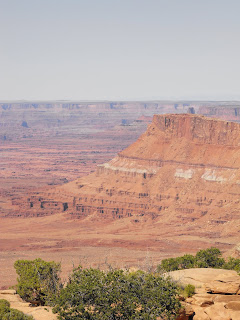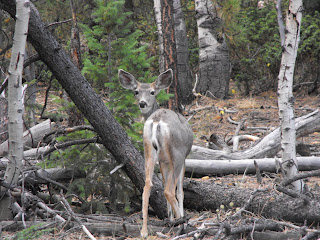
“Mesa Verde National Park is also an International Heritage site which includes over 4,500 archeological sites; only 600 are cliff dwellings.” Only 600—only 600!
Where do you begin?
Before we left home I downloaded the park brochure and other information. We looked at it prior to our visit. Two of the largest and most famous cliff dwellings—Cliff Palace and Balcony House could only be toured with a ranger and we determined that it would be too strenuous to visit those due to the many steps and ladders.
We spoke to the ranger at the Visitor Center. The Visitor Center is the only place you can get tickets for the ranger-guided tours and they help you decide what to do. The ranger confirmed what we thought and suggested visiting Spruce Tree House and the Mesa top sites and overlooks as well as the Chapin Mesa Museum. That is what we did.
After visiting the Chapin Mesa Museum where the artifacts ranged from pottery to textiles, we took the path to Spruce Tree House that begins just outside the museum. The asphalt path zigzagged down to the level of Spruce Tree House.


Tom at Spruce Tree House
Spruce Tree House, the best preserved cliff dwelling, is a self-guided tour. Rangers are posted at the site to answer questions and to keep people from climbing on the walls. Spruce Tree House is 89 ft. deep and 216 ft. across. It contains 114 rooms and is the third largest cliff dwelling in the park. It is believed that 100 people lived in Spruce Tree House. We purchased a booklet describing the features of the structure. I was able to climb down into a kiva, a religious structure. Ceremonies to ensure successful hunts, crops and good weather took place in kivas such as this one.
We then visited several of the mesa top sites and viewed many of smaller cliff dwellings from the overlooks. A highlight was the view of Cliff Palace. This is the cliff dwelling that is most associated with Mesa Verde.
Cliff Palace




































